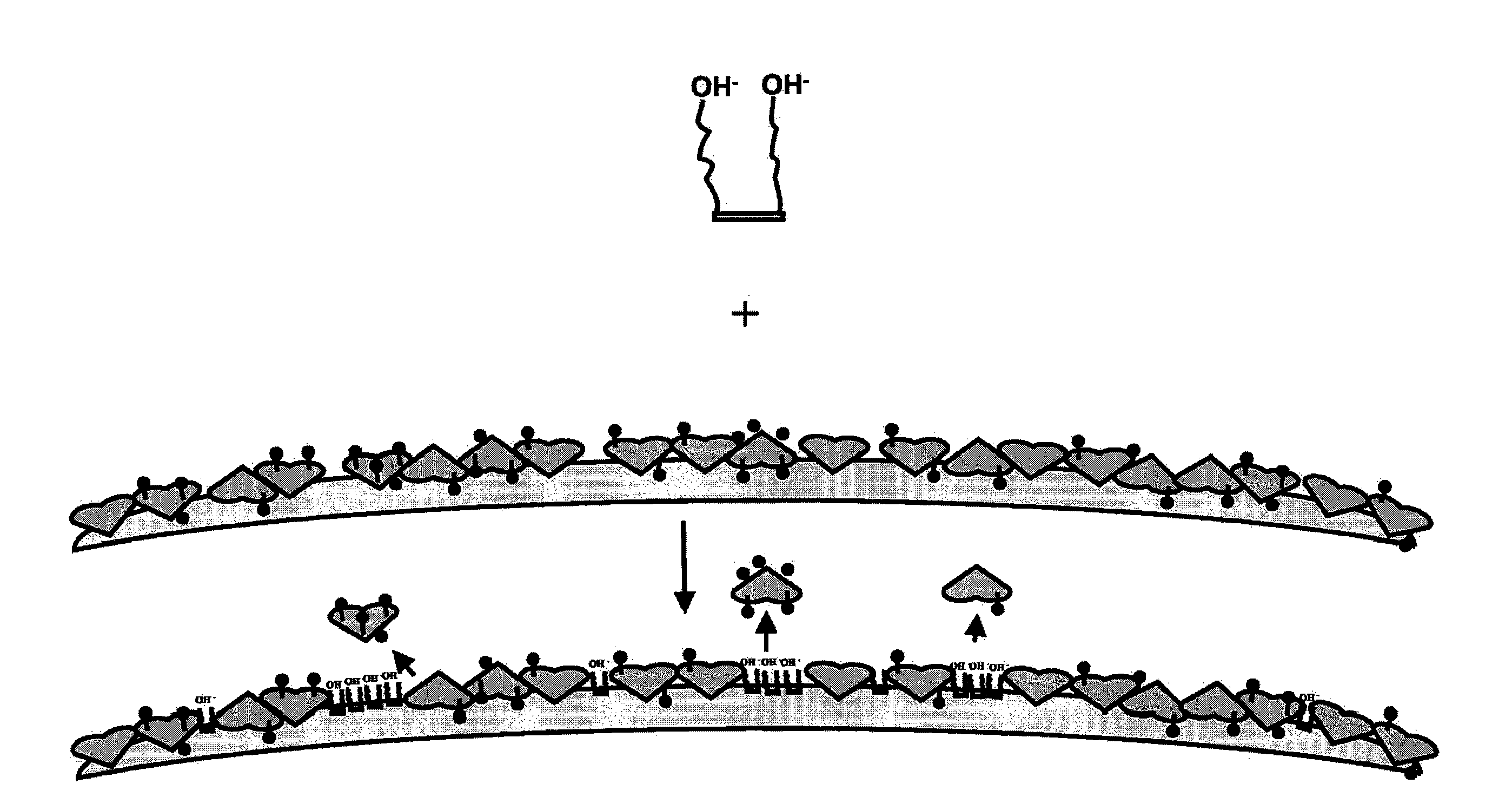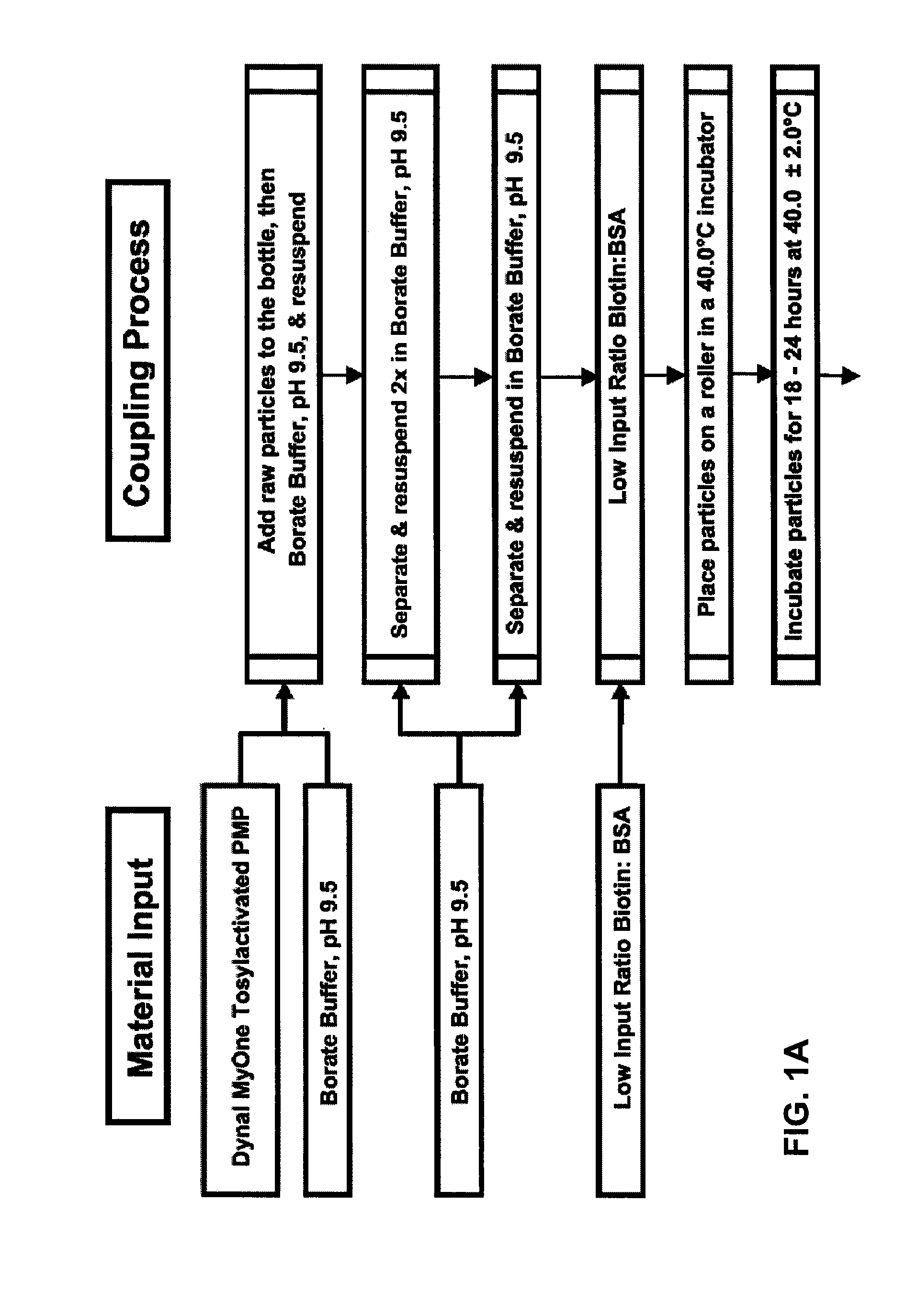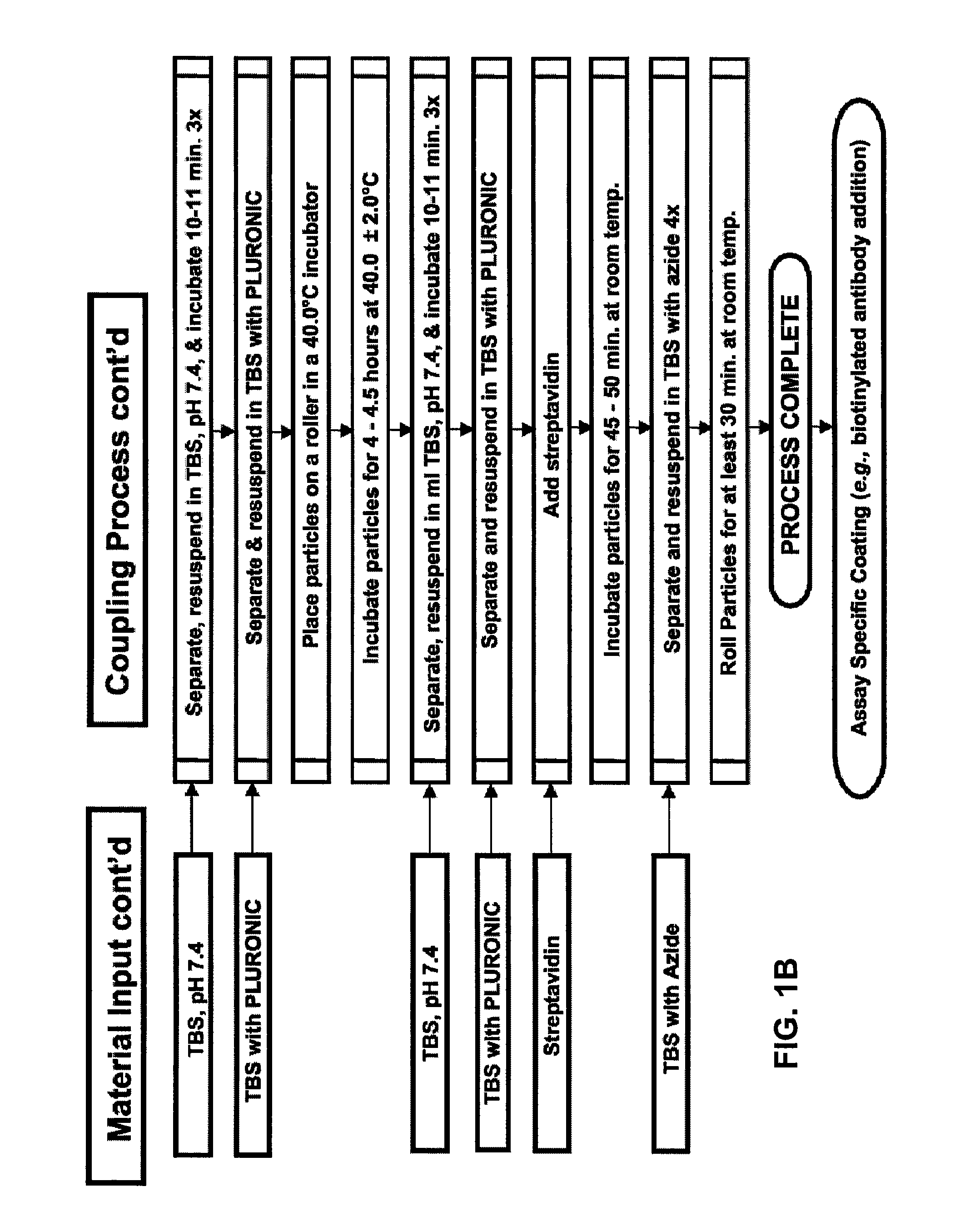Binding surfaces for affinity assays
a technology of affinity assay and support surface, which is applied in the field of support, can solve the problems of reducing the number of ligands on the support surface, not necessarily preventing or reducing the sloughing of antibodies or biotin-specific ligand binders from the binding surface, and poor assay sensitivity (suboptimal signal-to-noise ratio), accuracy, precision, stability, etc., and achieves the effect of reducing the number of ligands
- Summary
- Abstract
- Description
- Claims
- Application Information
AI Technical Summary
Benefits of technology
Problems solved by technology
Method used
Image
Examples
example 1
Low Input Ratio Biotinylation of Bovine Serum Albumin
[0202]BSA was biotinylated with sulfo-NHS-LC-biotin (sulfosuccinimidyl-6-[biotinamido]hexanoate; Pierce Biotechnology Inc. / Thermo Scientific) at various molar input ratios of biotin to BSA (see Table 1). Briefly, sulfo-NHS-LC-biotin (556.59 g / mol) was dissolved in DMF (dimethylformamide) at a concentration of 30 milligrams per milliliter (mg / mL), and lyophilized BSA (bovine serum albumin, protease free; Celliance Corporation, a Serologicals Company; 66,000 g / mol) was dissolved in 0.05 M borate buffer pH 8.2 at a concentration of 15 to 20 mg / mL. The sulfo-NHS-LC-biotin solution was added to the BSA solution such that the final molar input ratio of sulfo-NHS-LC-biotin to BSA was from 3.4 to 30 (mol sulfo-NHS-LC-biotin:mol BSA). The reaction was incubated for 2 hours at 4° C., and then immediately dialyzed (i.e., diafiltration or dialysis) with 0.05M borate buffer pH 8.2 to remove excess sulfo-NHS-LC-biotin (i.e., biotin reagent, and...
example 2
Non-Saturation Decreases Binding Capacity but Increases Assay Signal
[0212]A non-saturated and orientated binding surface using a biotin / SA system was prepared with biotin-BSA prepared at a low molar input ratio of biotin to BSA (4:1) using PMPs. Briefly, a batch of microparticles having a non-saturated and orientated binding surface was prepared by coating Dynal® AKT-100 tosylactivated PMPs with low input ratio biotinylated BSA, blocking the biotin-BSA microparticles with Pluronic® F108, dispersing the blocked biotin-BSA microparticles in Pluronic® F108, and finally coating the biotin-BSA microparticles with SA. See Table 2, “BCI Sample.” For comparison, a commercially available biotin-binding microparticle (Dynal® DYNABEADS MyOne Streptavidin T1, Invitrogen Corporation) was tested. See Table 2, “Dynal® Control.” The non-saturated surface and the commercially available biotin-binding surface were each prepared using the same raw microparticle (Dynal® MyOne tosylactivated 1.0 micron ...
example 3
Making a Non-Saturated Surface Employing a Dispersion Step
[0223]Biotin-BSA prepared using a low molar input ratio of biotinylating reagent to BSA (4:1) was used in a dispersion method for making a non-saturated binding surface. Briefly, the biotin-BSA (prepared as described above) was covalently attached to Dynal® microparticles as described above to yield a surface that was non-saturated with respect to the number of biotins per unit support surface area. The coated microparticles were then employed in a dispersion step before adding SA.
[0224]Initial studies used a hemacytometer (microscope analysis) to assess the aggregation state of biotin-BSA coated microparticles, prepared as described above, (1) prior to the addition of SA, (2) after the drop-by-drop addition of a 10 mg / mL solution of biotin-BSA coated microparticles to a continuously mixing solution of SA (0, 125, 250, 375, 500, 750, or 1000 micrograms SA per mL), and (3) after the addition of different amounts of an 18 mg / mL...
PUM
| Property | Measurement | Unit |
|---|---|---|
| average molecular weight | aaaaa | aaaaa |
| molecular weight | aaaaa | aaaaa |
| molecular weight | aaaaa | aaaaa |
Abstract
Description
Claims
Application Information
 Login to View More
Login to View More - R&D
- Intellectual Property
- Life Sciences
- Materials
- Tech Scout
- Unparalleled Data Quality
- Higher Quality Content
- 60% Fewer Hallucinations
Browse by: Latest US Patents, China's latest patents, Technical Efficacy Thesaurus, Application Domain, Technology Topic, Popular Technical Reports.
© 2025 PatSnap. All rights reserved.Legal|Privacy policy|Modern Slavery Act Transparency Statement|Sitemap|About US| Contact US: help@patsnap.com



